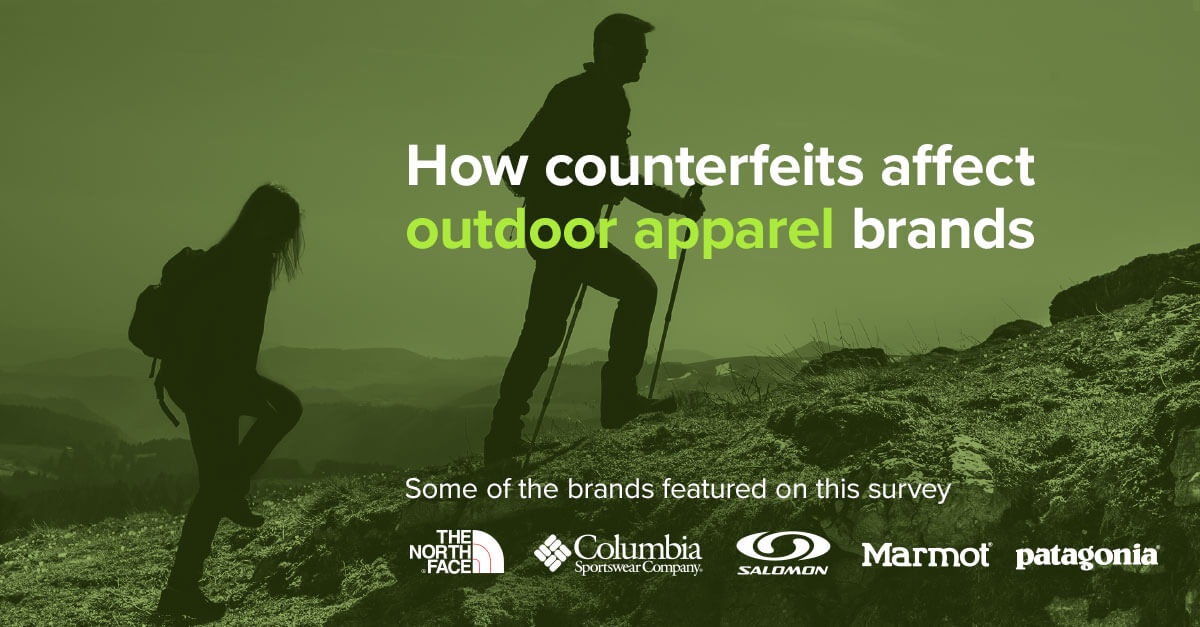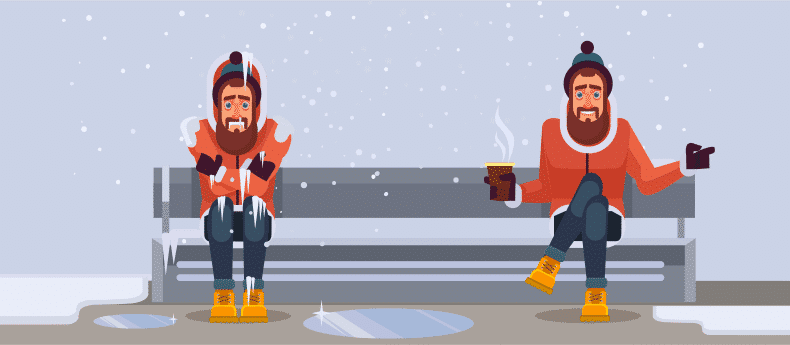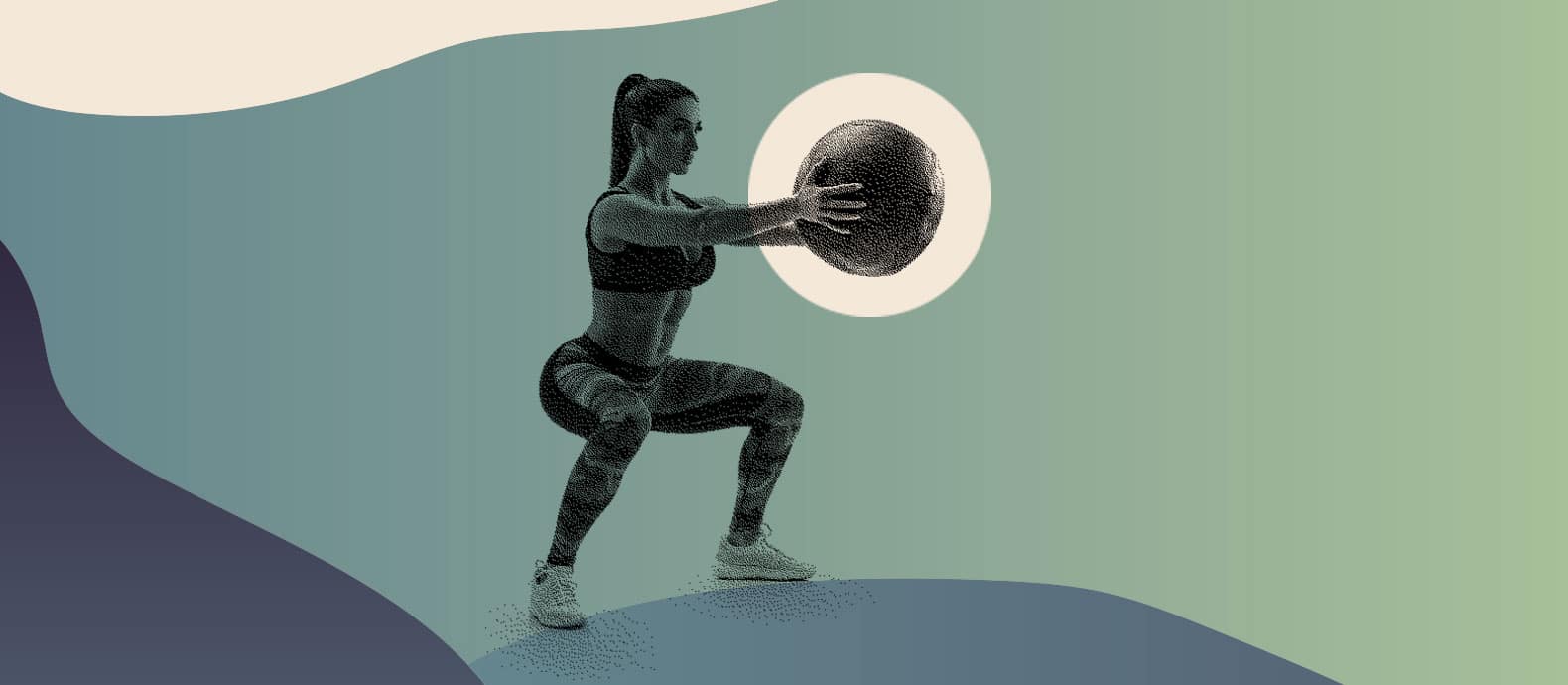After Canada Goose taking Chinese counterfeit sellers to court, Red Points takes a closer look at the trade in counterfeit outdoor apparel.
- Brands growing in popularity are faced with risky counterfeit production of their products
- Counterfeit outdoor apparel is hard to identify by the untrained eye
- Red Points’ research finds that customer interest in replicas is on the increase
Brands’ growth comes with threats
Outdoor apparel brands have been increasing in popularity, not only within their core market of users who participate in outdoor activities, but also consumers who purchase these items for their style and fashion benefits. As the industry experiences growth, both domestically and in China, it has struggled to deal with an influx of counterfeits.
Fake fashion items are nothing new, with brands such as Prada and Mulberry suffering at the hands of counterfeiters for years. Even sports brands have been the victims of extensive counterfeiting for decades. The counterfeit fashion industry also accounts for 10% of the total sales in fashion. However, outdoor apparel brands, though many now focus on style, tend to concentrate on the performance of their products.
Brands such as The North Face, Mammut and Berghaus focus their marketing on their products’ superior technology and performance against the elements. And it’s not all just for show; many brands are used by professional explorers or even those embarking on shorter adventures, where the performance of their jacket can mean the difference between a safe trip or not.
Counterfeiters themselves have been adapting their tactics and have increased their activity on social media at a concerning rate. In the last 3 years, counterfeits have tripled on social media, according to a Red Points’ study.
Counterfeit outdoor apparel has caused issues for customers and brands alike, with a number of high-profile legal cases taking place last year; such as Canada Goose’s fight against counterfeit-selling websites and Moose Knuckles’ counterfeit legal victory.
Counterfeit outdoor apparel is hard to spot
Those seeking a deal on their outdoor kit may be lured by cheap counterfeits. A quick look at an ecommerce site will provide users with seemingly bargain deals on well-known brands. These products are often presented in a very professional manner and it can be almost impossible for the untrained eye to decipher if these products are genuine or not. However, in nearly every case these “super offers” tend to be counterfeit products.
The image below is a picture of a fake “Columbia” jacket taken from a popular ecommerce site. The jacket was being sold for 35% of its standard retail value. After some investigation, our brand protection specialists concluded it was a fake, but it serves to show how difficult it can be to distinguish real from fake.

Canada Goose is an outdoor clothing producer, which prides itself on the quality and the performance of its products. Although the brand has taken a much more stylish approach to its more recent items, it remains dedicated to providing jackets and other items that keep people warm and, ultimately, alive in sub-zero temperatures. The company originally designed its parkas for use in Antarctica and is proud of its quality material and sourcing methods.
The Canada Goose website states, “We use down because it’s recognized as the world’s best natural insulator”, providing approximately three times the warmth per ounce as synthetic insulators. Each ounce of down has approximately two million fluffy filaments that interlock and overlap to create insulating pockets of air, which is what keeps you warm.“
Canada Goose has been plagued by counterfeits in recent years and has taken a seller of counterfeit Canada Goose products to court to seek damages. The company warned that these imitation products are not only of lesser quality aesthetically but can put people at serious risk, “Without real down and fur, the chance of frostbite or freezing becomes a real possibility,” states the website.
However, it is unlikely that the company will receive any financial compensation for the thousands of fakes sold across the sites, as it is almost impossible to identify the individuals who run them. Websites that sell fakes are usually registered using false names and utilize hard-to-trace banking methods.
Another Canadian brand, Moose Knuckles, had a similar experience in 2017. The jacket company was awarded $52 million in damages against counterfeit websites. However, the company is unlikely to collect anywhere close to that figure, due to the reasons explained above. That said, most brands are aware of this before beginning legal proceedings and believe it is more about making a statement to counterfeiters that they will have their websites removed for abusing this brand.
Many have stated that legal proceedings are perhaps suitable for news coverage and sending a message but ultimately it will not affect the day-to-day sale of counterfeits. Brand protection companies offer a quick reactive service to alleviate the pressures on brands.
The North Face – retailer of ‘high-performance climbing and backpacking equipment – is another brand which is popular amongst counterfeiters at this time of year. No longer just for athletes and outdoor enthusiasts, the brand’s waterproof and insulated jackets have become a popular winter purchase. Millions of fakes are sold worldwide -50,000 counterfeit North Face jackets were seized in a single raidon a warehouse last December by US Immigration and Customs Enforcement. The fake merchandise, with an estimated street value in excess of US$2 million, had been shipped from Bangladesh to New York just in time for the holidays. The counterfeit products reportedly sell for approximately one-third of the cost of the genuine North Face products and according to experts are of inferior quality. While authentic North Face jackets come with 3 white tags, including a size tag and care instructions on how to keep it waterproof, these tend not to feature on the counterfeits. Fake jackets also often zip up on the left side.
CEO of Red Points, Laura Urquizu said:
“When it comes to the day-to-day protection of brand reputation and customers, we know that only technological brand protection solutions have the capacity to cover all the channels quickly and effectively. However, we fully support our clients taking legal action against individuals and entities who infringe on their intellectual property, and we regularly gather and collate data to help them do so. But, this is usually a long and expensive process with results that can be difficult to measure.”
The counterfeiters look set to continue using a collection of techniques to avoid detection. The game of cat and mouse is set to continue. The losers are the brands but the victims will be cold customers who may be wishing they had not found such an “amazing deal”.
Red Points’ study finds counterfeit-prone customers
Red Points conducted research into what would attract customers to counterfeit outdoor apparel, given their risky lower quality. The study focuses on outdoor apparel customers in the U.S., their buying habits and attitudes towards counterfeits; the report indicates some alarming trends are taking place within the sector.
The research suggests that outdoor apparel customers can be easily seduced into risky buying behavior if there is a financial incentive. For example, while only a small proportion (mainly the under 25s) trusted social media as a method of purchasing outdoor apparel items, 41% would consider using this method if the item was significantly discounted.
With regards to actual contact with counterfeit outdoor apparel, 20% of the participants had knowingly bought a fake item at some point, despite our sample showing good awareness levels about the dangers of inferior, counterfeit products.
The survey looked into the reactions of participants who had bought counterfeit outdoor apparel, either knowingly or unknowingly, and found that 16% were satisfied with the fake product and recommended it as an inexpensive alternative. This should be a red flag for brands, as it would imply there is a significant portion of their consumer-base who may actively switch to counterfeit outdoor apparel and act as advocates for the products. It is likely that this is the same group of customers who buy outdoor apparel items for their style and fashion purposes, as the fakes would almost certainly not meet the same performance standards as the genuine product.
Customers blame brands and platforms
The survey concludes by asking the sample who they feel is responsible for removing counterfeit outdoor apparel products from online channels. While the majority of participants stated that they would blame the ecommerce platform, 46% felt that the brand owner was also responsible.
If the results of this study prove even close to being representative of the market, then this has enormous implications for brands’ intellectual property and marketing strategy, sales tactics and brand protection. For more details, download the complete research via the image below.







